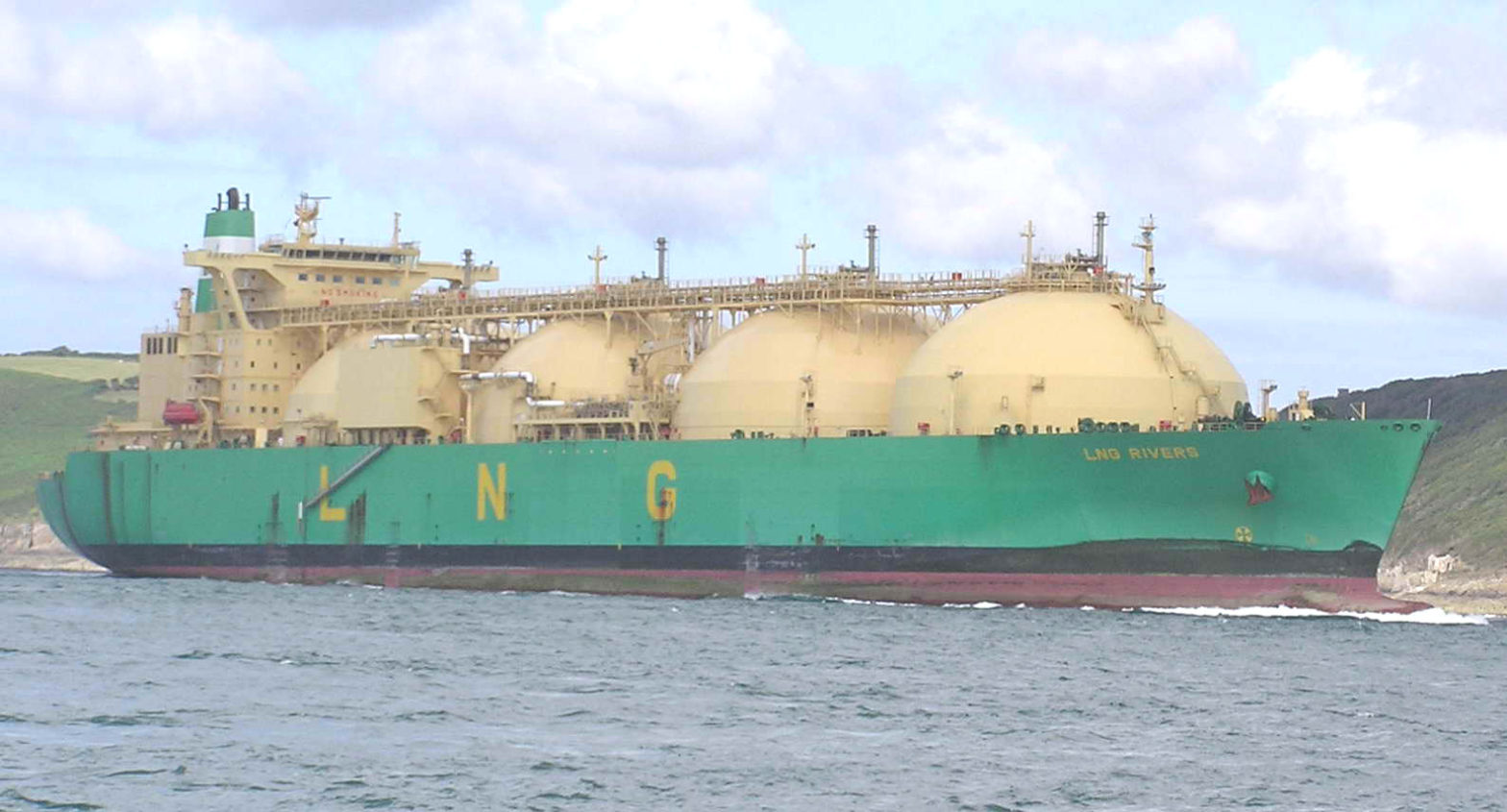Study indicates rising world LNG supply pull down natural gas prices causing governments to build new greenhouse gas emitting natural gas fired electrical capacity rather than renewables.
A paper published last year in Environmental Science & Technology compares greenhouse gas (GHG) emissions of various energy sources in Asian countries to emissions if BC exported LNG is used. The abstract states:
Results show that while the ultimate magnitude of the greenhouse gas emissions associated with natural gas production systems is still unknown, life cycle greenhouse gas emissions depend on country-level infrastructure … as well as the assumptions on what is displaced in the domestic electricity generation mix.
The research was funded in part by the Electrical Power Research Institute , the Hydraulic Fracturing Initiative at the University of Calgary, and the Canadian Association of Petroleum Producers.
The paper notes many gaps in specific data on emissions from natural gas operations but it does make some interesting, and contradictory, conclusions on the risks and benefits of LNG in the global push to lower greenhouse gas emissions.
You can download the paper in full here and make sure you get the important “supporting information” as well.
The caveats on BC LNG’s clean image.
This graphic seems to make it a pretty cut and dried case for the BC LNG industry:
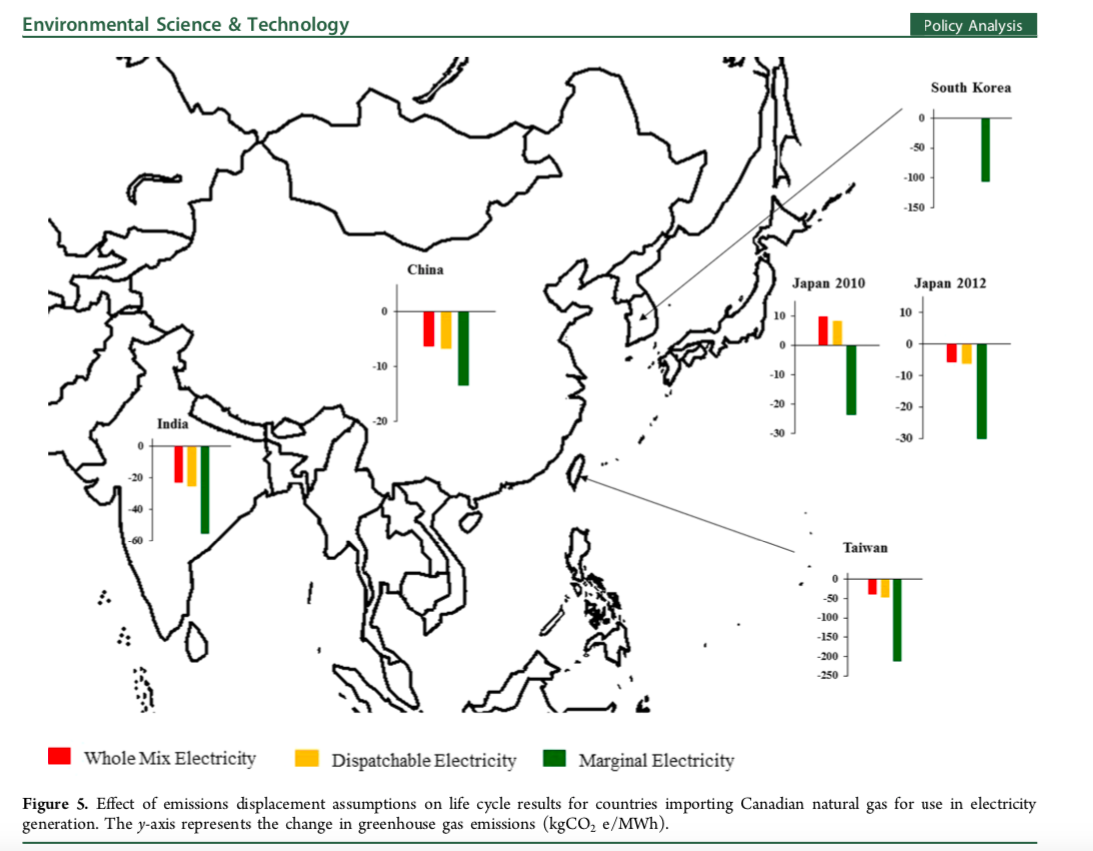
It shows reductions in the intensity of emissions created if each of the countries were to take on the full hopeful export capacity of Canadian LNG producers. This equates to annual decreases of between 0 and 53 mega-tonnes of CO2 emissions per year in the countries studied.

One mega-tonne of CO2 is roughly equivalent to the annual emissions of all private vehicles in Metro Vancouver (2012: SFU). However, a 53 mega-tonne annual reduction in CO2 in China is just 0.14% of their annual emissions of over 37,000 mega-tonnes. (2018: Guardian). In smaller nations like Taiwan reductions would represent closer to 15% of total emissions.
Cheap renewables a threat to LNG prospects.
A 2017 report from the International Renewable Energy Agency (IRENA) shows a precipitous drop over the past decade in the cost of Solar Photovoltaic (SPV) and wind generation. The 3 graphs below show real world costs of new utility scale renewable installations diving deep into and even beating the cost of fossil fuel based generation.
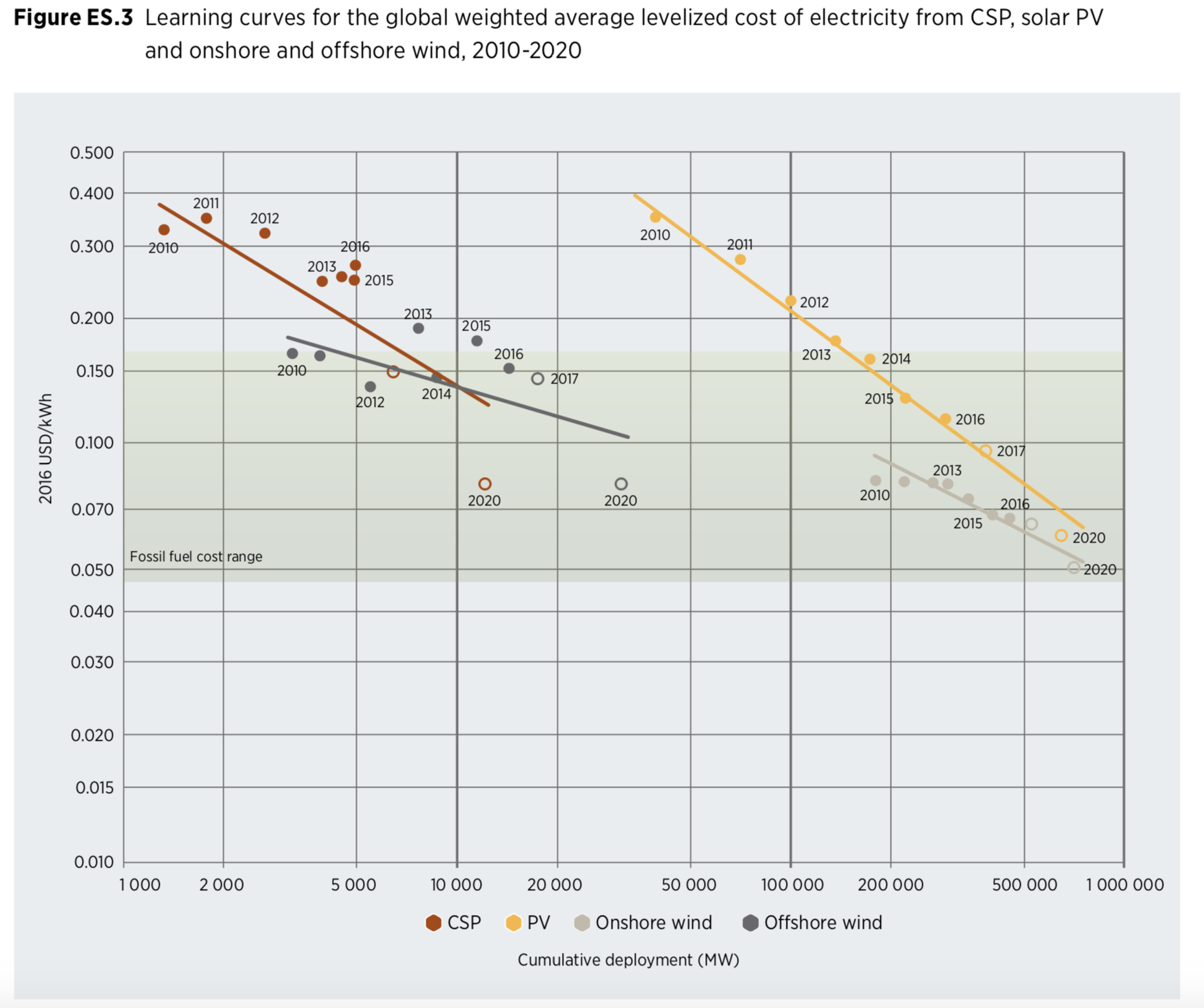


The University of Calgary study notes the price drop and other factors mean, “[LNG] demand may be hampered in regions where renewables are competitive.”
Further it makes clear that choosing LNG may result in an increase in future GHG emissions:
Due to the plummeting costs of renewable power, it may increasingly be able to compete economically with gas-powered electricity generation in non-OECD Asian countries. In this scenario, LNG imports would result in increased greenhouse gas emissions in importing countries
In the Supporting Information, the authors include a section titled “Emissions Displacement Scenarios”. It notes that Canada’s potential displacement with LNG in China amounts to just 3% of their generation capacity whereas it would overwhelm Belgium and Argentina.
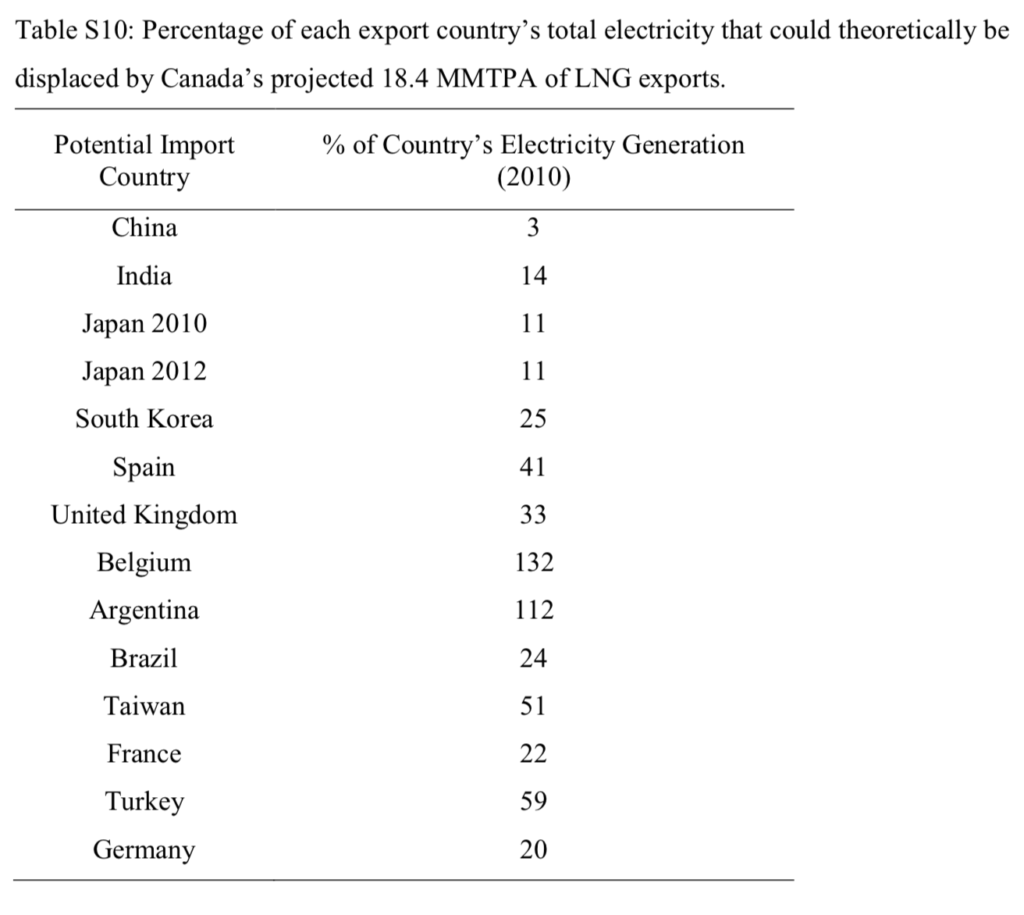
In China, renewables (not including Nuclear and Hydro) already represent near the same amount of electricity generated as is coming from natural gas.

The report shows renewables are already generating more electricity than oil in China, Brazil, Turkey, Spain, the UK, Belgium, and Germany; more than Nuclear in India, Brazil and Turkey; and more than Hydro in Spain, the UK, Belgium, Taiwan, and Germany.
Renewables are beating Natural Gas in Germany and near level in Brazil.
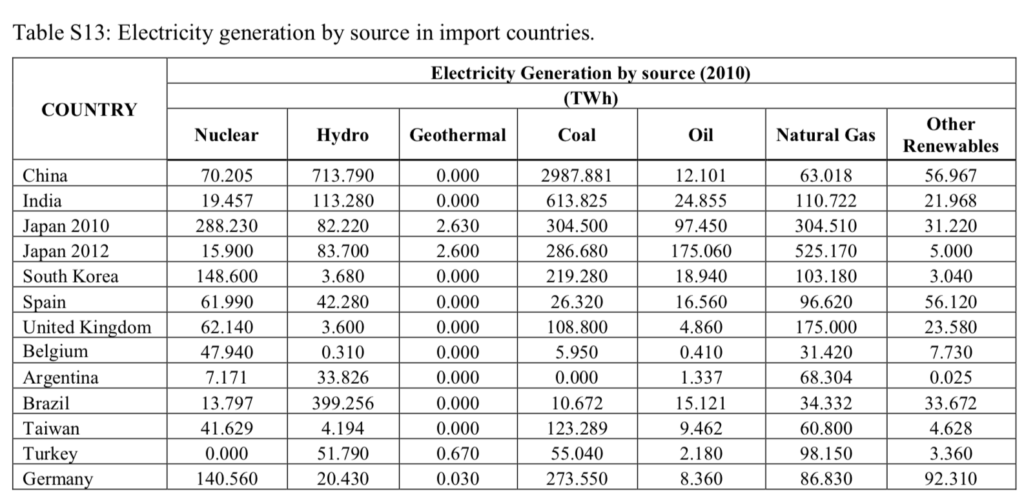
Japanese disaster leads to huge rise in GHGs.
The paper captures the unexpected change in energy generation caused by the 2011 TÅhoku Earthquake and resulting complete shut down of that nation’s dozens of nuclear reactors.
The loss of nuclear power in Japan also severely affected renewables going from 2.8% to just 0.5% of the national supply.

The earthquake made Japan, “the main importer” of LNG in Asia. Japan’s sudden loss of its nuclear capacity meant a significant increase in GHG emissions as they shifted to coal, oil and LNG. The country has committed to rebuilding its renewables and nuclear capacity and that is leading to a fall in LNG imports.
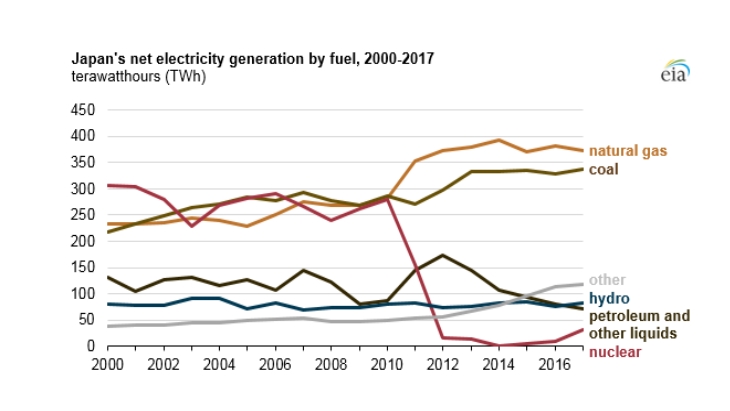
That experience in Japan provided a signal for the researchers (emphasis added):
“The underlying assumption is that decisions are made similar to past decisions, based on resource availability, cost, and static policy and regulation… One limitation to this approach may be that the costs of renewable energy are becoming increasingly competitive. High import prices of natural gas have led to the decreased competitiveness of LNG when compared to cheap, local coal or the decreasing costs of renewables. While our scenarios focus on displacing a representative cross-section, dispatchable electricity, and marginal electricity, in the absence of policies to incent renewable energy, imported natural gas that is cheap enough may displace renewable energy. We addressed the possibility of displacing renewable power in the [Supporting Information].
Government support for BC LNG is the same risky climate choice.
LNG Canada is set to build a facility that will represent one of the largest single sources of greenhouse gas emissions in Canada at 4 mega-tonnes per year just for phase one. Phase 2 will double that.
The most recent BC Government report states GHG emissions in the province grew by 1.5% from 2015 to 2016 to 62.5 mega-tonnes of CO2-e.
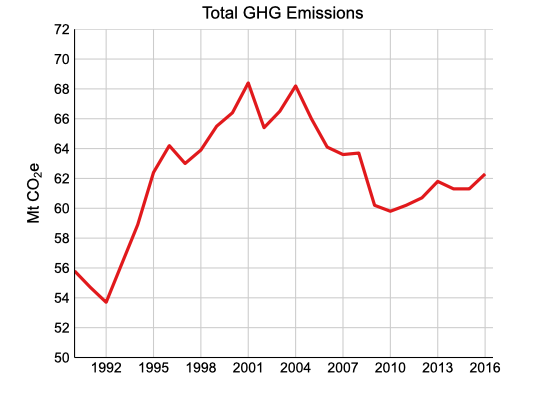
At completion, the LNG Canada facility alone would represent a 12.8% increase in CO2 from British Columbia at 2016 levels. Emissions from the fracking and extraction process would be in addition to that. As the report states, those additional emissions are difficult to pin down and remain largely unknown.
The authors of this report warn that cheap LNG will make “policy makers weigh the expected GHG emissions reduction in adding renewable capacity, to the economic benefits of adding state-of-the-art natural gas plants.”
BC and Canadian lawmakers are making those same choices.
Feature image source: Wikipedia.
Image credit: Pline

